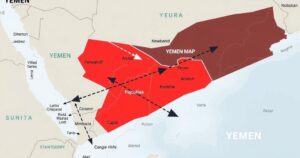Tsunami Advisory Canceled After 7.6 Magnitude Earthquake in Caribbean

On Saturday, a magnitude-7.6 earthquake struck the Caribbean Sea, prompting a tsunami advisory for Puerto Rico and the Virgin Islands, which was later canceled. Advisories remained for Cuba, Honduras, and the Cayman Islands, predicting modest tsunami waves in those areas.
A 7.6 magnitude earthquake struck the Caribbean Sea on Saturday, as reported by the US Geological Survey (USGS). The tremor occurred at 6:23 p.m. ET, approximately 129 miles southwest of Georgetown, Cayman Islands, causing authorities to issue a tsunami advisory for Puerto Rico and the Virgin Islands. Local residents were urged to evacuate coastal areas and avoid harbors and beach activities initially.
Subsequent to the initial advisory, the US National Tsunami Warning Center canceled the tsunami warning specifically for Puerto Rico and the Virgin Islands. However, warnings were still active for Cuba, where tsunami waves of 1 to 3 meters were anticipated, and for Honduras and the Cayman Islands, where estimated waves could measure between 30 centimeters and 1 meter. Predictions indicated these waves would manifest between 8 p.m. ET and 10:30 p.m. ET.
Earthquakes in seismically active regions, such as the Caribbean, can trigger tsunami warnings due to the potential for large waves generated by undersea quakes. The magnitude and location of the earthquake are vital for assessing tsunami risk, prompting immediate advisories from geological and tsunami monitoring services. Hawaii and California often face similar threats, underscoring the global nature of tsunami preparedness.
In summary, a significant earthquake in the Caribbean led to a temporary tsunami advisory for Puerto Rico and the Virgin Islands, which was later canceled. While these areas were cleared of tsunami threats, precautions remain for Cuba and parts of Central America. Continuous monitoring and prompt warnings are essential in minimizing risks associated with such seismic events.
Original Source: www.accuweather.com








